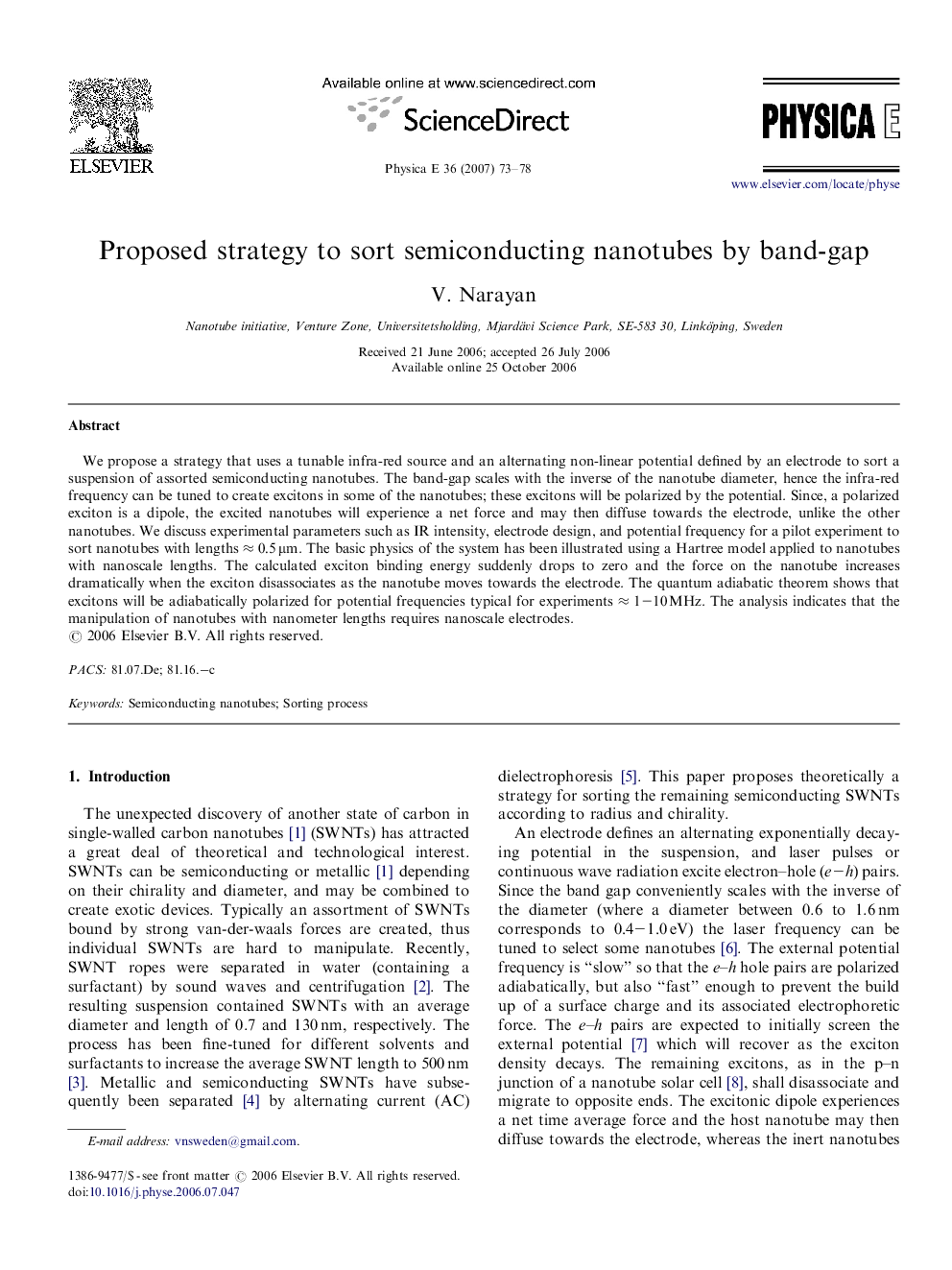| Article ID | Journal | Published Year | Pages | File Type |
|---|---|---|---|---|
| 1547298 | Physica E: Low-dimensional Systems and Nanostructures | 2007 | 6 Pages |
Abstract
We propose a strategy that uses a tunable infra-red source and an alternating non-linear potential defined by an electrode to sort a suspension of assorted semiconducting nanotubes. The band-gap scales with the inverse of the nanotube diameter, hence the infra-red frequency can be tuned to create excitons in some of the nanotubes; these excitons will be polarized by the potential. Since, a polarized exciton is a dipole, the excited nanotubes will experience a net force and may then diffuse towards the electrode, unlike the other nanotubes. We discuss experimental parameters such as IR intensity, electrode design, and potential frequency for a pilot experiment to sort nanotubes with lengths â0.5μm. The basic physics of the system has been illustrated using a Hartree model applied to nanotubes with nanoscale lengths. The calculated exciton binding energy suddenly drops to zero and the force on the nanotube increases dramatically when the exciton disassociates as the nanotube moves towards the electrode. The quantum adiabatic theorem shows that excitons will be adiabatically polarized for potential frequencies typical for experiments â1-10MHz. The analysis indicates that the manipulation of nanotubes with nanometer lengths requires nanoscale electrodes.
Keywords
Related Topics
Physical Sciences and Engineering
Materials Science
Electronic, Optical and Magnetic Materials
Authors
V. Narayan,
